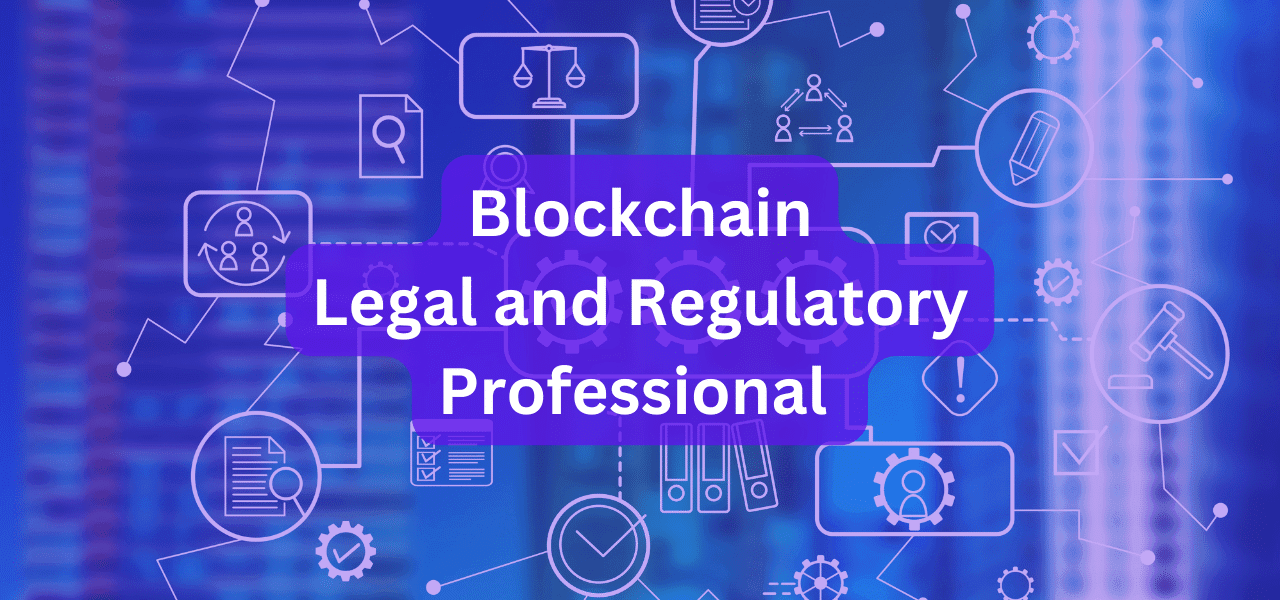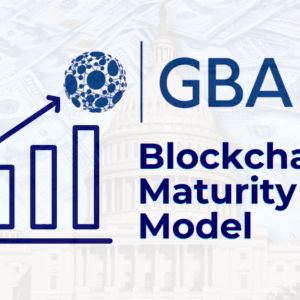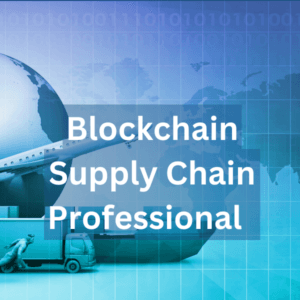Description
Blockchain Legal Professional Course Details
Web3 Foundations Course
Module 1: Understanding what Web3 is
- Overview of Web3 features and architecture
- The history of Web1 and Web2
- Characteristics of Web3
- Decentralization
- Terminology
Module 2: Why Web3
- Data is the New Oil
- Why Web3 Matters
- The Purpose of Web3
- The flow of Talent to Web3
- The transfer of Value from Web2 to Web3
Module 3: Web3 and the Metaverse
- What is the Metaverse
- Technologies of the Metaverse
Module 4: Blockchain Fundamentals
- Blockchain is Not Bitcoin
- Blockchain Definitions
- History of Blockchain
- Properties of Blockchain
- 10 Key Concepts of Blockchain
- How does Blockchain Work?
- Consensus Types
- Mining and Verification
- Smart Contracts
Module 5: Understanding DeFi
- What is DeFi
- DeFi vs Traditional Finance
- DeFi Activities
- DeFi Risks
Module 6: Challenges, Risks and Ethics of Web3
- Advantages of Web3
- Challenges of Web3
- Speed of Web3
Module 7: What comes after Web3?
- What is Web3
- Is there a Web4 and what is it
- Is there a Web5
Blockchain Foundations Course
Module 1: Blockchain Background and Basics
- Blockchain History
- How Blockchain Works
- What are the Properties of a Blockchain?
Module 2: Different Types of Blockchains
- Private vs. Public Blockchains
- Permissioned vs. Permissionless
- Public vs. Private vs Hybrid Discussion
Module 3: Consensus
- Consensus Mechanisms
- Consensus Protocols – 14 examples
Module 4: Cryptography and Hashing
- Machine/Mathematical Cryptography
- Hash Function Properties
Module 5: Smart Contracts
- Intensive Smart Contracts
- Advantages and Disadvantages of Smart Contracts
- Blockchain Oracles
Module 6: Blockchain Wallets
Module 7: Pros and Cons
Module 8: Public Blockchain-Based Applications
Module 9: Blockchain and Crypto Regulation
- Regulatory Opportunity and Challenges
- Global Regulations
- Regulatory View of Bitcoin
Module 10: Regulatory Reporting
Module 11: Distributed Autonomous Organizations
- The DAO – Distributed Autonomous Organization
- The DAO Attack – Legal and Other Issues
Module 12: Blockchain Today
Module 13: The Trilemma
Blockchain for Lawyers
Module 1: Blockchain Overview
- An Overview of Blockchain
- Cryptography & Exchange of Value
- Definitions, Ledgers, Mining and Participants
- Securities & Smart Contracts
Module 2: Regulatory Environment Overview, by region
- US State Laws
- European Union
- Europe cont. & Intl. Developments
- International Agencies
- International cont. & Other Noteworthy Jurisdictions
Module 3: Cryptocurrency, Securities, Governance and Exchanges
- Bitcoin & Cryptocurrency
- Cryptocurrency (continued) & Securities
- Securities (continued) and ICOs \
- ICOs cont. and Intro to Rewards & Tokens
- Corporate Governance and (The/A) DAO
Data Protection Regulation: GDPR, CPRA/CCPA
Module 1: Introduction to Data Privacy and GDPR
- Overview of data privacy laws and regulations
- Understanding the General Data Protection Regulation (GDPR) and its key provisions
- Identifying personal data and GDPR’s territorial scope
- Role of data protection officer and GDPR’s fines and penalties
Module 2: GDPR Compliance
- GDPR’s principles of data processing
- GDPR’s rights of data subjects
- GDPR’s accountability and governance requirements
- GDPR’s data security and data breach notification requirements
Module 3: Module: Understanding the Digital Services Act (DSA)
- Overview of the Digital Services Act (DSA) and its key provisions
- Identifying the scope of the DSA and how it applies to organizations
- Understanding the DSA’s obligations for online platforms and digital services providers
- DSA’s provisions for removing illegal content online, including hate speech and terrorist content
- DSA’s provisions for ensuring online safety, including measures to protect children from harmful content
- DSA’s provisions for tackling disinformation and ensuring transparency of online political advertising
- How to comply with the DSA’s rules and requirements
Module 4: Understanding the Digital Markets Act (DMA)
- Overview of the Digital Markets Act (DMA) and its key provisions
- Identifying the scope of the DMA and how it applies to organizations
- Understanding the DMA’s definition of gatekeepers and how it applies to companies
- DMA’s provisions for preventing harmful practices such as self-preferencing, discriminatory treatment and margin squeeze
- DMA’s provisions for ensuring fair and open access to services and data
- DMA’s provisions for preventing gatekeepers to leverage their market power to the detriment of businesses and consumers
- Understanding the role of the regulatory authority established to monitor and enforce compliance
- How to comply with the DMA’s rules and requirements
Module 5: CPRA and CCPA
- Overview of the California Privacy Rights Act (CPRA)
- Understanding the California Consumer Privacy Act (CCPA)
- Identifying the similarities and differences between GDPR, CPRA and CCPA
- How to comply with CPRA and CCPA
Module 6: Other US State Privacy Laws
- US State Privacy Laws
Module 7: Blockchain and Web3: Data Protection and Privacy
- Overview of blockchain technology and the web3 ecosystem
- Understanding the unique challenges and opportunities that blockchain and web3 present for data protection and privacy
- Analysis of the key features of blockchain technology that impact data protection and privacy, such as immutability, decentralization, and transparency
- Identifying the different types of data that can be stored on a blockchain, and the privacy implications of each
- Discussion of current privacy solutions for blockchain and web3, such as zero-knowledge proofs and homomorphic encryption
- Analysis of the regulatory landscape for blockchain and web3, including existing laws and proposed regulations
- Best practices for data protection and privacy in a blockchain and web3 context, including data minimization, access controls, and monitoring
- Case studies and practical exercises to apply the concepts and strategies learned in real-world scenarios
Module 8: Data Privacy in Practice
- Best practices for data privacy compliance
- Implementing data privacy policies and procedures
- Conducting data privacy impact assessments
- Handling data subject access requests
Module 9: Data Privacy in the Future
- Understanding upcoming data privacy regulations
- Discussing data privacy trends and challenges
- Preparing for future data privacy developments
- Review of the program and next steps for ongoing data privacy compliance
Enterprise Blockchain Strategy Course
Module 1: Basics of Blockchain Part 1
Module 2: Basics of Blockchain Part 2
Module 3: Understanding Smart Contracts
Module 4: Blockchain Security / Risk
Module 5: Understanding ICO’s and Cryptocurrencies
Module 6: DAO (Distributed Autonomous Organizations)
Module 7: Use case examples of how blockchains are being used today
Module 8: Blockchain Use case Solution Workshop
Module 9: Blockchain Pros and Cons
Module 10: Barriers to Adoption
Module 11: How to prepare your firm for blockchain;
Module 12: Regulatory Impact on Blockchain
Module 13: What does Blockchain Future Look Like?
Module 14: Leading in a Technological Disruptive Market
Key Management
Module 1: Key Management Overview
- Introduction to Key Management
- Public Key Cryptography
Module 2: Key Generation
Module 3: Key Management and Storage
Module 4: Risks
- Risks of Poor Private Key Security
- Third-Party Key Storage
Module 1 – Introduction to the Bank Secrecy Act (BSA) and Anti-Money Laundering (AML) regulations
- History
- Purpose of BSA and AML
Module 2 – Financial Crimes Enforcement Network (FinCEN)
- Financial Crimes Enforcement Network (FinCEN)
- Oversight of Virtual Currencies
- Technical Assistance provided by Financial Crimes Enforcement Network (FinCEN)
- Other Regulatory Agencies SEC, CFTC and DFS
Module 3 – Role of financial institutions in detecting and reporting money laundering and terrorism financing activities
- Suspicious Activity Reports (SARs)
- Reasonable Suspicion
Module 4 – Responsibilities of financial institutions under the BSA and AML regulations
- Responsibilities
Module 5 – Penalties for non-compliance with the BSA and AML regulations
- Examples of Civil Penalties
- Examples of Civil Penalties for Crypto Exchanges
- Examples of Criminal Penalties
- Examples of Civil Penalties for Crypto Exchanges
Module 6 – Best practices for compliance with the BSA and AML regulations
Information Security and Cyber Risk Awareness
Module 1: Introduction to Information Security and Cyber Risk
- Understanding Information Security: Definition and importance.
- Cyber Risk: Definition, types, and impact on businesses
- Key concepts: Confidentiality, Integrity, and Availability (CIA)
- Common threats and vulnerabilities
- Real-life examples of cyber-attacks and their consequences
Module 2: Cyber Risk Assessment and Management
- Risk assessment: Identifying and prioritizing risks
- Risk management: Mitigation, transfer, acceptance, and avoidance
- Developing a cybersecurity framework
- Security policies and procedures
- Incident response planning and execution
Module 3: Securing Networks and Systems
- Network security fundamentals: Firewalls, VPNs, and intrusion detection
- Securing endpoints: Antivirus, antimalware, and patch management
- Authentication and access control: Password policies, multi-factor authentication, and biometrics
- Encryption and secure communication
- Cloud security and securing remote access
Module 4: Social Engineering and User Awareness
- Social engineering techniques: Phishing, pretexting, and baiting
- Recognizing and responding to social engineering attacks
- The role of user awareness in information security
- Best practices for online safety and data protection
- Creating a security-aware culture within an organization
Module 5: Regulatory Compliance and Emerging Technologies
- Overview of regulatory frameworks: GDPR, HIPAA, and PCI-DSS
- Ensuring compliance and avoiding penalties
- The impact of emerging technologies on information security: IoT, AI, and blockchain
- Future trends in cybersecurity
- Continual improvement and staying up-to-date in a rapidly evolving landscape
OFAC Compliance Essentials
Module 1 – Introduction to OFAC
- Definition and overview of the Office of Foreign Assets Control (OFAC)
- OFAC’s Role in Enforcing Economic and Trade Sanctions
- Legal Authority and Jurisdiction of OFAC
- Types of Sanctions Programs Administered by OFAC
Module 2 – Legal and regulatory framework for OFAC compliance
- Relevant Laws and Executive Orders
- OFAC Regulations and Guidance
- OFAC penalties
Module 3 – OFAC compliance policies and procedures
- Senior Management Commitment
- Developing and Implementing an OFAC Compliance Program
- Testing and Auditing
- Training
- Root Causes of OFAC Sanctions Compliance Program Breakdowns
- OFAC Monitoring and Review Process
- Screening for Sanctioned Parties
- Recordkeeping and Reporting Requirements
Module 4 – Best practices for OFAC compliance in Financial Services
- Best Practices
Module 5 – Challenges and common pitfalls in OFAC compliance
- Challenges
- Navigating Complex and Evolving Sanctions Regimes
- Dealing with Ambiguities and Uncertainties in OFAC Guidance
- Managing Third-Party Risk
Module 6 – Prohibited Transactions
- Examples of prohibited transactions
Module 7 – Case studies and examples of OFAC enforcement actions
- OFAC Financial Sector Enforcement Actions
- Recent Real-world Examples of Recent OFAC Enforcement Cases
- Enforcement Actions Against Crypto Exchanges
- Lessons Learned from these Cases
Module 8 – Conclusion and wrap-up
- Summary of Key Points
- Future Developments and Ongoing Challenges in OFAC Compliance





